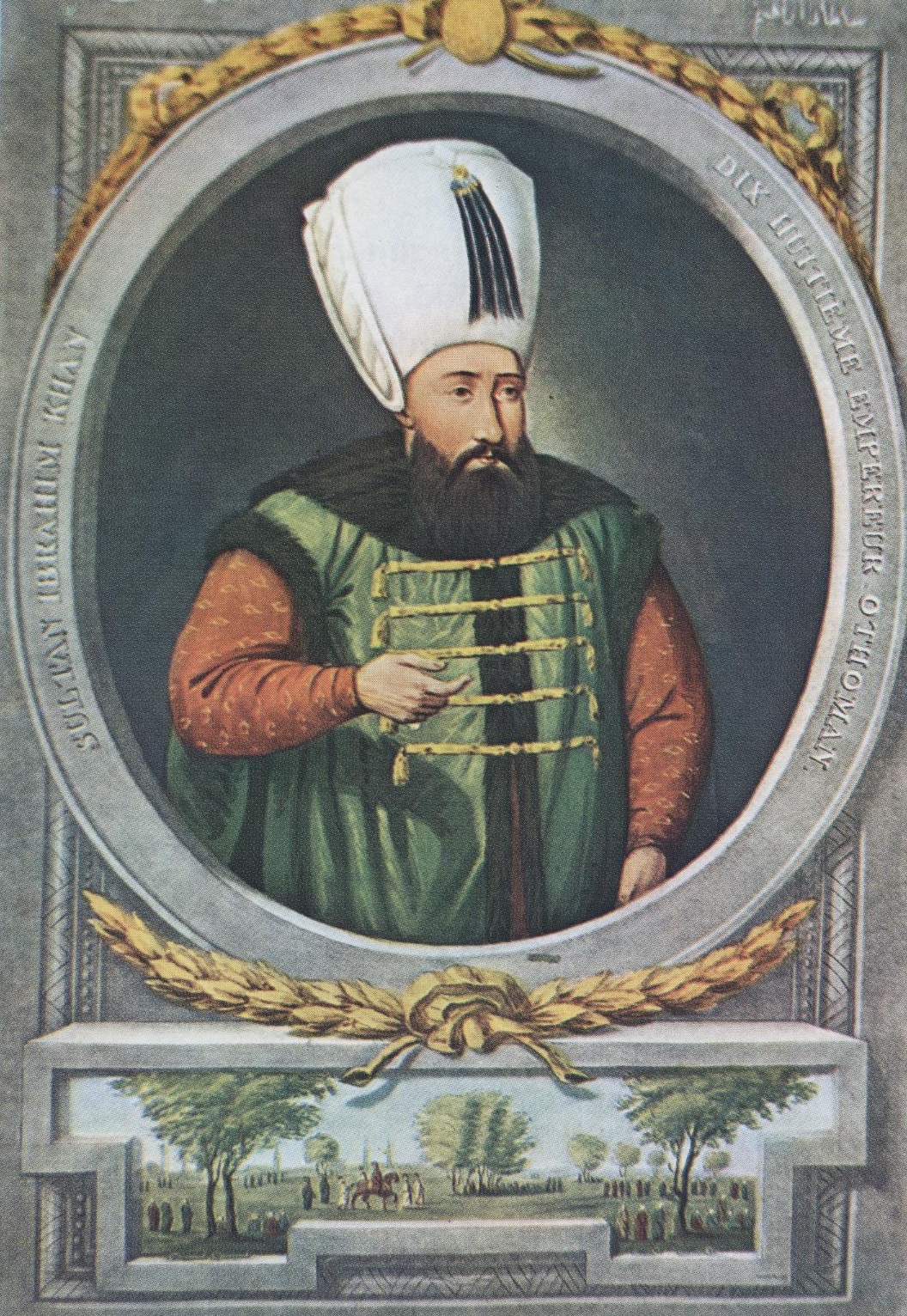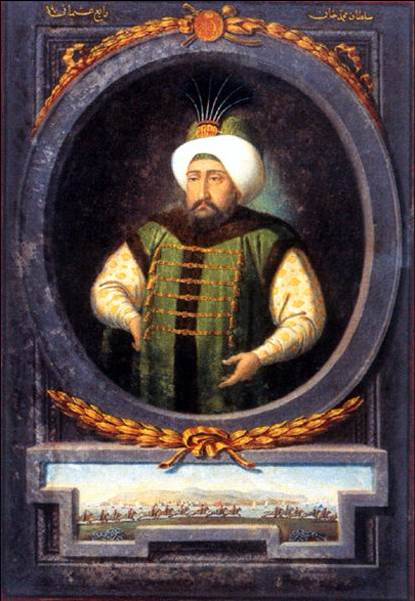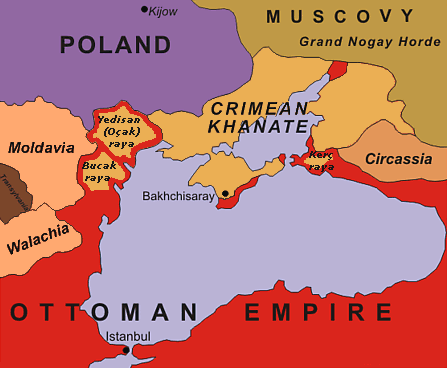|
Ayşe Sultan (daughter Of Ahmed III)
Ayşe Sultan (; 24 November 1718 – 2 October 1775), also called Küçuk Ayşe, was an Ottoman princess, the daughter of Sultan Ahmed III and his consort Muslı Kadın. Early life Ayşe Sultan was born on 24 November 1718 in the Topkapı Palace. Her father was Sultan Ahmed III and her mother was Emine Muslı Kadın (called also Muslıhe, Muslu or Musalli). She had a younger full sister named Zübeyde Sultan. At her birth, she was nicknamed Küçük Ayşe, meaning Ayşe "the younger", to distinguish her from her cousin Ayşe "the eldest" (Büyük Ayşe), daughter of Mustafa II. She was educated in the palace, as was customary for the princesses that time. Personal life Marriages In 1728, when Ayşe Sultan was thirteen years old, Ahmed betrothed her to his swordbearer Kunduracızade Istanbullu Mehmed Pasha, and appointed him the governor of Rumelia. The wedding took place on 18 November 1728 at the Topkapı Palace, along with her half-sisters Saliha Sultan and Zeynep Sulta ... [...More Info...] [...Related Items...] OR: [Wikipedia] [Google] [Baidu] |
Topkapı Palace
The Topkapı Palace (; ), or the Seraglio, is a large museum and library in the east of the Fatih List of districts of Istanbul, district of Istanbul in Turkey. From the 1460s to the completion of Dolmabahçe Palace in 1856, it served as the administrative center of the Ottoman Empire, and was the main residence of its sultans. Construction, ordered by the Sultan Mehmed the Conqueror, began in 1459, six years after the Fall of Constantinople, conquest of Constantinople. Topkapı was originally called the "New Palace" ( or ) to distinguish it from the Eski Saray, Old Palace ( or ) in Beyazıt Square. It was given the name , meaning Cannon Gate, in the 19th century. The complex expanded over the centuries, with major renovations after the 1509 Constantinople earthquake, 1509 earthquake and the 1665 fire. The palace complex consists of four main courtyards and many smaller buildings. Female members of the Sultan's family lived in the harem, and leading state officials, including th ... [...More Info...] [...Related Items...] OR: [Wikipedia] [Google] [Baidu] |
Zeynep Sultan
Zeynep Sultan (; "''gemstone, precious stone''" and "''defender''"; 8 April 1714 – 25 March 1774) was an Ottoman princess, the daughter of Sultan Ahmed III. Birth Zeynep Sultan was born in the 8 April 1714 in the Topkapı Palace. Her father was Sultan Ahmed III. First marriage In 1728, Zeynep Sultan married (Küçük) Mustafa Pasha, the nephew of the grand vezir Nevşehirli Damat Ibrahim Pasha, and the second head of the royal stables at the time. The wedding ceremony took place at the Topkapı Palace. On 8 December Zeynep's trousseau was sent to her palace known as ''Kıbleli Palace'' and the next day the wedding procession took place. Together, they had a son. Second marriage After the death of Mustafa Pasha in 1764, Zeynep Sultan in 1765 married Melek Mehmed Pasha, who had previously served as the grand admiral of the Ottoman fleet, during the reign of her half-brother Mustafa III. Melek Mehmed Pasha served as the Admiral of the Fleet An admiral of the fleet or shor ... [...More Info...] [...Related Items...] OR: [Wikipedia] [Google] [Baidu] |
Ibrahim Of The Ottoman Empire
Ibrahim (; ; ; 13 October 1617 – 18 August 1648) was the sultan of the Ottoman Empire from 1640 until 1648. He was born in Constantinople as the last son of sultan Ahmed I and Kösem Sultan, an ethnic Greek originally named Anastasia. He was called Ibrahim the Mad () due to his mental condition and behavior. However, historian Scott Rank notes that his opponents spread rumors of the sultan's insanity, and some historians suggest he was more incompetent than mad. Early life Ibrahim was born on 13 October 1617 as the last son of Sultan Ahmed I and his Haseki Sultan, Kösem Sultan and when he was merely a month old, his father suddenly died and Ibrahim's uncle Mustafa I became the new sultan. Kösem Sultan and her children, including an infant Ibrahim, were sent to the Old Palace. After his brother Murad IV inherited the throne from his uncle Mustafa I, Ibrahim was confined in the Kafes, which affected his health. Murad had Ibrahim's two surviving half-brothers Şehzade B ... [...More Info...] [...Related Items...] OR: [Wikipedia] [Google] [Baidu] |
Gülnuş Sultan
Emetullah Rabia Gülnuş Sultan (, 'spring' and 'essence of rose'; 1642 – 6 November 1715) was the '' Haseki Sultan'' of Ottoman Sultan Mehmed IV and '' Valide Sultan'' to their sons Mustafa II and Ahmed III. She was the prominent figure during the era of the Sultanate of Women which spanned for nearly 200 years and ended with her death in 1715. Early life Gülnuş Sultan was born in 1642 in the town of Rethymno, Crete, when the island was under Venetian rule, the daughter of a Greek Orthodox priest. A minor theory saw instead Gülnuş Sultan belonged to the Venetian Verzini family which had settled the city. She was captured by the Ottomans during the invasion of Crete in 1645. Time as consort The Ottoman army invaded the island during the Cretan War; she was captured as a very young girl when the Ottomans conquered Rethymno in 1645, taken as a slave and was sent to Constantinople. She was renamed ''Emetullah Rabia Gülnuş'' and was given a thoroughly Ottoman educ ... [...More Info...] [...Related Items...] OR: [Wikipedia] [Google] [Baidu] |
Mehmed IV
Mehmed IV (; ; 2 January 1642 – 6 January 1693), nicknamed as Mehmed the Hunter (), was the sultan of the Ottoman Empire from 1648 to 1687. He came to the throne at the age of six after his father was overthrown in a coup. Mehmed went on to become the second-longest-reigning sultan in Ottoman history after Suleiman the Magnificent. While the initial and final years of his reign were characterized by military defeat and political instability, during his middle years he oversaw the revival of the empire's fortunes associated with the Köprülü era. Mehmed IV was known by contemporaries as a particularly pious ruler, and was referred to as gazi, or "holy warrior" for his role in the many conquests carried out during his long reign. Under Mehmed IV's reign, the empire reached the height of its territorial expansion in Europe. From a young age he developed a keen interest in hunting, for which he is known as ''avcı'' (translated as "the Hunter"). In 1687, Mehmed was overthrown by ... [...More Info...] [...Related Items...] OR: [Wikipedia] [Google] [Baidu] |
Hatice Sultan (daughter Of Mustafa III)
Hatice Sultan (; "''respectful lady''"; 14 June 1768 – 17 July 1822) was an Ottoman princess, the daughter of Sultan Mustafa III and his consort Adilşah Kadın. She was the half sister of Sultan Selim III. Early life Hatice Sultan was born on 14 June 1768 in the Topkapı Palace. Her father was Sultan Mustafa III, and her mother was Adilşah Kadın. She had a full sister named Beyhan Sultan, two years elder than her. The two sisters were particularly close thought all their lives. After her father's death in 1774, when she was six years old, she followed her mother and sister to the Old Palace. Due to the isolated environment, both Hatice and her sister developed symptoms of depression, anxiety, and other troubling behaviors. Her mother, Adilşah Kadın, then wrote to the new sultan, Abdülhamid I, half-brother of Mustafa III, to allow her daughters to marry, which would allow them to leave confinement in the Palace. The sultan granted her request and found husbands for the t ... [...More Info...] [...Related Items...] OR: [Wikipedia] [Google] [Baidu] |
Mustafa III
Mustafa III (; ''Muṣṭafā-yi sālis''; 28 January 1717 – 21 January 1774) was the sultan of the Ottoman Empire from 1757 to 1774. He was a son of Sultan Ahmed III (1703–30), and his consort Mihrişah Kadın. He was succeeded by his brother Abdul Hamid I (1774–89). Early life Mustafa was born at the Edirne Palace on 28 January 1717. His father was Sultan Ahmed III, and his mother was Mihrişah Kadın. He had a full brother named Şehzade Süleyman. In 1720, a large fifteen day circumcision ceremony took place for Mustafa, and his brothers, princes Süleyman, Mehmed, and Bayezid. In 1730, after the Patrona Halil revolt led to the deposition of his father Sultan Ahmed III and the succession of his cousin Sultan Mahmud I, Mustafa, his father, and brothers were imprisoned in the Topkapı Palace. In 1756, after the death of his elder half-brother Mehmed, he became heir to the throne. Reign Accession Mustafa ascended the throne on 30 October 1757, after t ... [...More Info...] [...Related Items...] OR: [Wikipedia] [Google] [Baidu] |
Turhan Sultan
Hatice Turhan Sultan (, "''merciful"'' or "''noble''"; 1627 – 4 August 1683) was the first Haseki sultan of the Ottoman sultan Ibrahim (), and Valide sultan as the mother of Mehmed IV () as well as the Official Regent of the Ottoman Empire, reigning from 1651 to 1656. Turhan was prominent for the regency of her young son and her building patronage. She and Kösem Sultan are the only two women in Ottoman history to be regarded as official regents and had supreme control over the Ottoman Empire. As a result, Turhan became one of the prominent figures during the era known as Sultanate of Women. Name Filiz Karaca, the author of the article about Turhan in the Islamic Encyclopedia, noted that although it was stated that Kösem Sultan gave her the name Hatice Turhan, the Ottoman historian and contemporary of Turhan Uşşakızade Ibrahim Efendi wrote that she was first given the name Turhan/Tarhan () and only then Hatice. Karaca also noted that in older sources she was called ... [...More Info...] [...Related Items...] OR: [Wikipedia] [Google] [Baidu] |
Russo-Turkish War (1768–1774)
The Russo-Turkish wars ( ), or the Russo-Ottoman wars (), began in 1568 and continued intermittently until 1918. They consisted of twelve conflicts in total, making them one of the longest series of wars in the history of Europe. All but four of these wars ended in losses for the Ottoman Empire, which was undergoing a period of stagnation and decline. Conversely, they showcased the ascendancy of the Russian Empire as a significant European power after Peter the Great oversaw extensive modernization efforts in the early 18th century. Ultimately, however, the end of the Russo-Turkish wars came about with the dissolution of the two belligerents' respective states as a consequence of World War I: the Russian Empire collapsed in 1917 and was ultimately succeeded by the Union of Soviet Socialist Republics in 1922; while the Ottoman Empire was partitioned between 1918 and 1922 and succeeded by the Republic of Turkey in 1923. History Initial and intermediate phases (1568–1739) ... [...More Info...] [...Related Items...] OR: [Wikipedia] [Google] [Baidu] |
Battle Of Bucharest (1771)
The Battle of Bucharest took place on 20 October 1771 and was an important event of the Russo-Turkish war. It occurred when the Ottomans tried to recapture Bucharest from the Russians. In the summer of 1771, Russia launched an offensive against the Turkish positions along the Danube, attacking Giurgiu, but this turned out to be unsuccessful and the initiative in actions passed to the Ottomans. By autumn, Ottoman forces along the Danube were ready to invade Wallachia, where the Russians had a limited number of soldiers. Nevertheless, they were defeated in the subsequent battle of Bucharest and retreated. Background Previous events In the winter of 1771, the Russians invaded the right bank of the Danube and occupied the city of Giurgiu, leaving a small garrison there. This garrison could not resist the siege of the Turks in May and surrendered the city. The new commander of the Bucharest division, Reinhold Essen, tried to recapture the city in August, though unsuccessfully due ... [...More Info...] [...Related Items...] OR: [Wikipedia] [Google] [Baidu] |
Sanjak Of Tirhala
The Sanjak of Tirhala or Trikala (Ottoman Turkish: ; ) was second-level Ottoman province ( or ) encompassing the region of Thessaly. Its name derives from the Turkish version of the name of the town of Trikala. It was established after the conquest of Thessaly by the Ottomans led by Turahan Bey, a process which began at the end of the 14th century and ended in the mid-15th century. History In the mid-14th century, Thessaly had been ruled by Serbian and Greek lords and enjoyed great prosperity. It was conquered by the Ottoman Turks in successive waves, in 1386/7, the mid-1390s, and again after 1414/23, and the conquest was not completed until 1470. Trikala itself fell probably in 1395/6 (although Evliya Çelebi claims it happened as early as 1390). The newly conquered region was initially the patrimonial domain of the powerful marcher-lord () Turahan Bey (died 1456) and of his son Ömer Bey (died 1484) rather than a regular province. Turahan and his heirs brought in settlers ... [...More Info...] [...Related Items...] OR: [Wikipedia] [Google] [Baidu] |
Topal Osman Pasha
Topal Osman Pasha (1663–1733) was an Ottoman military officer and administrator. A capable man, he rose to the rank of ''beylerbey'' by the age of 24 and served as general against the Venetians and the Habsburg monarchy and as governor in several provinces. His career eventually brought his appointment to the position of Grand Vizier in 1731–32. After his dismissal, he was sent to a provincial governorship, but was soon recalled to lead the Ottoman troops in the Ottoman–Persian War of 1730–35. He succeeded in defeating Nader Shah and saving Baghdad in 1732, but clashed with Nader for a second time the next year and was decisively beaten in the Battle of Kirkuk (1733), in which he lost his life. Life Osman was born ca. 1663 in the Morea (Peloponnese) peninsula to TurkishYaşaroğlu, Kamil "Osman Paşa (Topal)" (1999) ''Yaşamları ve Yapıtlarıyla Osmanlılar Ansiklopedisi'', İstanbul:Yapı Kredi Kültür Sanat Yayıncılık A.Ş. C.2 s.414 (in Turkish) parents. His ... [...More Info...] [...Related Items...] OR: [Wikipedia] [Google] [Baidu] |






